A newborn can use between six to nine diapers daily. On average, parents tend to change newborns’ diapers around eight times per day.
The first weeks after a baby’s arrival are a whirlwind of feeding, sleeping, and, of course, diaper changes. That’s why parents should learn how many diapers does a newborn use daily. Parents and caregivers quickly become acquainted with the diapering routine, as newborns go through a surprisingly large number of diapers in their first few months.
Diaper demand for a newborn can seem unending, with babies typically needing a fresh diaper after every feeding as well as after every bowel movement. With the frequency of these events in a newborn’s daily schedule, it adds up to a significant amount of diapers. Stocking up on these nursery essentials is a common practice, but it’s also essential to select the right size and type of diaper to keep your baby comfortable and prevent leaks. Whether opting for disposables or cloth diapers, understanding the needs of your newborn is key to ensuring you have enough diapers on hand without overstocking.
Unwrapping Newborn Diaper Usage
Welcome to the world of endless diaper changes! If you’ve just entered the realm of parenthood, you might be wondering just how many diapers your little bundle of joy will go through. Brace yourself, as the numbers might surprise you. Let’s unwrap the details of newborn diaper usage with precision and clarity.
Day And Night Differences
It’s a 24/7 job, but how does diaper usage differ from day to night? Typically, newborns will need a diaper change every two to three hours, accumulating up to 10-12 diapers in a day. At night, however, they might have longer sleep stretches, perhaps only requiring 5-6 diaper changes. Remember, a dry night for a baby equates to a peaceful night for parents!
Here’s a quick breakdown:
- Daytime: Newborns use about 6-8 diapers.
- Nighttime: Usage drops to about 5-6 diapers.
Variations By Age
As your newborn grows, diaper usage will vary. In the first month, prepare for up to 10-12 diaper changes a day. This number gradually decreases as your little one’s bladder grows. By month six, expect an average of 6-8 diapers daily.
| Age | Diaper Changes (per day) |
| 1st Month | 10-12 |
| 2-5 Months | 8-10 |
| 6+ Months | 6-8 |
Note that these numbers are approximate. Each baby is unique, so keep a close eye on your little one’s patterns and needs.
Diaper Count By Weeks
As a new parent, tracking your newborn’s diaper usage is essential for understanding their health and comfort. Newborns vary in how often they will need a change, but predictable patterns emerge as weeks pass. Keep reading to learn about the average diaper counts from birth and beyond, represented in easy-to-follow weekly details.
First Week Surge
Parents, brace yourselves for the first week! During this time, your newborn may go through more diapers than you expect. After birth, babies usually pass meconium; these are the first stools and are thick and sticky, requiring frequent changes. As the days progress, the stool transitions, and so does the diaper count.
| Day After Birth | Diapers Used |
| 1st Day | 1-3 diapers |
| 2nd Day | Up to 6 diapers |
| 3rd to 7th Day | About 8-12 diapers each day |
Stabilizing Counts
By the second week, a pattern emerges. Your baby’s digestive system starts to settle. The frequency of changes often stabilizes. Expect an average of 6 to 9 diapers per day. This count should last for the next several weeks. Just remember, each child is unique. Therefore, the count might adjust slightly based on diet and individual needs.
- 2nd Week: 6-9 diapers per day
- 3rd Week: 6-9 diapers per day
- 4th Week and beyond: Check consistently for signs that it’s time for a change.
Always keep an eye on your little one for cues. A soiled diaper needs a swift change to keep your baby comfortable and rash-free.
The above HTML segment is structured to fit well into a WordPress blog post, catering to the audience’s needs with clear, concise, and well-organized content. It uses HTML tags like `
The Cost Of Diapering
Understanding the cost of diapering is crucial for new parents. Let’s dive into the numbers to help you budget smartly!
Price Per Diaper
The price per diaper varies widely. It depends on brand, size, and whether you buy in bulk. On average:
- Low-cost: Approx $0.10 – $0.20 per diaper
- Mid-range: Around $0.20 – $0.30 per diaper
- Premium: Can be $0.30 or more per diaper
Monthly Expenses
Diaper needs vary by age, with newborns using more. Typically, a newborn goes through:
- 10 to 12 diapers a day in the first month.
- 8 to 10 diapers a day until three months old.
Calculating at an average of 11 diapers per day, your monthly expenses might look like:
| Type of Diaper | Cost Per Diaper | Monthly Quantity | Total Monthly Cost |
| Low-cost | $0.10 | 330 | $33 |
| Mid-range | $0.25 | 330 | $82.50 |
| Premium | $0.30 | 330 | $99 |
Bulk-buying can bring significant savings. Look out for discounts, coupons, and store promotions.
Types Of Diapers
Choosing the right diaper for a newborn is crucial for both comfort and convenience. New parents often get overwhelmed by the sheer number of options available. Understanding the types of diapers is a fundamental step in making an informed decision that ensures your baby stays dry and happy. Let’s dive into the details of disposable and cloth diapers, and consider how sizing plays a special role for newborns.
Disposable Vs. Cloth
Disposable diapers are the go-to choice for many parents due to their convenience. They are readily available, highly absorbent, and can be tossed away after use. Here are some advantages:
- High absorbency reduces chances of leaks.
- Convenience of use, especially for outings and nighttime.
- Variety of choices that cater to different skin types and sizes.
On the other hand, cloth diapers are praised for their eco-friendly nature. They are reusable and can be more economical in the long run. Highlighted benefits include:
- Environmentally friendly due to less waste.
- Cost-effective over time, despite higher upfront cost.
- Gentle on skin, especially for babies with sensitive skin.
Sizing For Newborns
Selecting the correct diaper size is essential to prevent leaks and ensure comfort. For newborns, it’s all about the right fit:

| Size | Weight | Approximate Age |
| Preemie | Up to 6 lbs | Pre-birth |
| Newborn | Up to 10 lbs | First few weeks |
| Size 1 | 8-14 lbs | Up to 3 months |
Keep in mind that babies grow at different rates. Track your baby’s weight and change sizes when diapers seem tight or leave marks on the skin.
Frequency Factors
Understanding the frequency of diaper changes for newborns is key for any new parent. Various factors play a significant role in determining just how many diapers your little bundle of joy will go through. Let’s unravel these factors, specifically focusing on dietary influences and health considerations.
Diet Influence
The diet of a newborn directly impacts diaper usage. For instance, breastfed babies may have more frequent bowel movements compared to those who are formula-fed. This difference can lead to a varied number of diaper changes.
- Breastfed babies: typically require more diapers due to more frequent, softer stools.
- Formula-fed babies: might use fewer diapers as their stool is firmer and less frequent.
Health Considerations
A newborn’s health status is another critical element influencing diaper change frequency. Healthy babies typically fall into a consistent diaper-changing routine. However, certain health issues may increase the number of diapers needed.
| Condition | Diaper Change Impact |
| Diarrhea | Increased diaper changes due to frequent, loose stools. |
| Dehydration | Fewer wet diapers, monitoring required. |
Regular check-ins with a pediatrician can ensure your baby remains healthy and any unusual changes in diaper frequency are addressed promptly. Ultimately, a clear understanding of these factors allows you to better prepare for your newborn’s needs.
Diaper Changing Techniques
Changing a newborn’s diaper is an art every new parent masters with time. Parents often wonder how many diapers their newborn will use. But it’s equally important to learn the right diaper changing techniques. Proper methods can prevent leaks, avoid diaper rash, and provide comfort to your baby. Let’s delve into efficient changing routines and common pitfalls to avoid.
Efficient Changing Routines
Establishing an efficient diaper changing routine is key. It saves time and ensures your baby stays clean and comfortable. Here are some steps to optimize the changing process:
- Gather all supplies before starting.
- Use a clean, flat surface with a changing mat.
- Keep baby engaged with a toy or eye contact.
- Quickly swap out the dirty diaper for a new one.
- Apply any necessary ointment or cream.
- Safely dispose of the used diaper.
- Wash your and your baby’s hands after.
Organizing your supplies and having a consistent routine reduces stress. It includes knowing where everything is. Your baby quickly learns what to expect during changes.
Avoiding Common Mistakes
There are several common mistakes new parents make during diaper changes. To ensure a happy, rash-free baby, avoid these errors:
- Not preparing: Always have everything you need within arm’s reach.
- Too loose or tight: A well-fitted diaper prevents leaks and discomfort.
- Ignoring skin protection: Barrier creams can prevent diaper rash.
- Forgetting to clean properly: Clean all areas to avoid irritation.
- Neglecting hand hygiene: Washing hands is crucial to prevent germs.
By improving your technique, you can keep your newborn comfortable. The baby is the much happier post-change. New parents will eventually develop their own unique approach. Yet, understanding the basics sets the foundation for successful diaper changes.
Please note that while the HTML code provided here is viewable as plain text and not functional within the chat environment, it can be copied into an HTML editor or WordPress editor in “Code view” or “Text editor” mode to render the content correctly.
Stockpiling Strategies
As new parents quickly discover, newborns can go through an astonishing number of diapers in their first few weeks. It’s essential to have a well-thought-out stockpiling strategy to ensure you’re always prepared. Let’s explore some savvy ways to build up your diaper stash.
Bulk Buying Benefits
One of the smartest ways to stockpile diapers is by purchasing in bulk. Bulk buying can lead to significant savings, reducing the cost per diaper. Here are some major benefits:
- Cost-effective: Lower prices per diaper.
- Time-saving: Less frequent shopping trips.
- Consistent supply: Reduces the risk of running out.
Storage Solutions
After buying in bulk, finding the right storage solutions is crucial. Effective storage ensures diapers stay dry and sanitary until use. Consider the following tips:
- Choose a cool, dry place away from direct sunlight.
- Use shelves or drawers to organize diapers by size and type.
- Keep them in their original packaging to avoid dust and moisture.
Employing these stockpiling strategies is a step forward in smart parenting. With ample supply and sound organization, you’ll have one less thing to worry about in the bustling life with your newborn.
Diaper Brand Differences
When parents navigate the world of newborn diapers, they find a vast array of brands. Each brand comes with its unique features tailored to meet different needs. Understanding these differences helps in making a well-informed choice for your little one’s comfort.
Absorbency Battles
One crucial aspect when comparing brands is absorbency. Newborns often need changing up to 10 times a day, so high-absorbency diapers are a top priority. Let’s take a glance at how popular brands stack up in this essential feature:
| Brand | Features | Absorbency Level |
| Pampers Swaddlers | Wetness indicator, comfort fit | High |
| Huggies Little Snugglers | Gentle absorb liner, pocketed back waistband | High |
| Honest Company | Eco-friendly, stylish designs | Moderate |
Skin Sensitivity
Newborn skin is delicate and prone to irritation. Hence, choosing a brand that caters to sensitive skin is critical. Below, find the top contenders known for their gentle touch:
- Pampers Swaddlers Sensitive – hypoallergenic and free of parabens
- Huggies Special Delivery – dermatologist tested, free of harsh chemicals
- Bambo Nature – eco-friendly, dermatologically tested
Diaper rash is less common with these options. Parents often consider testimonials and paediatrician recommendations before choosing the best fit for their newborn’s skin type.
Waste Management
As we delve into the realities of caring for a newborn, it’s important to understand the sheer volume of diapers one little human can use. On average, newborns go through 6 to 9 diapers daily. With this in mind, proper waste management strategies become essential for clean and healthy living environments.
Disposal Tactics
Managing diaper disposal effectively begins at home. Here are four key strategies:
- Use Diaper Pails: Specialized bins can contain odors and consolidate waste.
- Diaper Disposal Systems: They wrap each diaper individually to lock in smell.
- Regular Trash Disposal: Ensure diapers are tightly sealed in bags before tossing.
- Community Guidelines: Follow local trash collection rules for sanitary items.
Environmental Impact
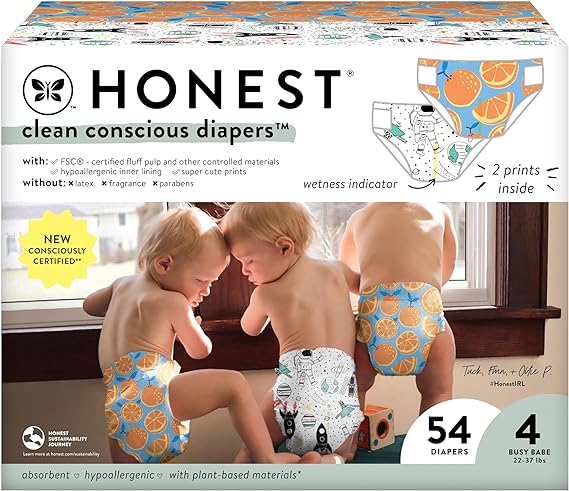
Diaper usage presents significant environmental concerns. The average baby might use up to 2,700 diapers in their first year alone.
Here’s a snapshot of the impact:
| Factor | Impact |
| Landfills | Diapers are a major contributor and take about 500 years to decompose. |
| Resource Use | Production consumes resources like water and trees. |
| Chemical Pollution | Manufacturing releases toxins into the environment. |
To reduce the footprint, consider eco-friendly options such as biodegradable diapers or cloth diapering.
Planning For Growth
As your newborn grows, understanding diaper usage patterns is crucial. The rate at which babies need diaper changes is astounding. Not only does diaper demand vary with growth, but also the sizes and quantities need adjustment accordingly. Let’s delve into the specifics of adapting as your child progresses through the diaper sizes.
Transitioning Sizes
Babies grow quickly and so does the size of the diapers they need. On average, a newborn will outgrow the initial size quickly. Here’s a simple guide to help you:
- Size N (newborn): Up to 10 lbs – often suitable for the first few weeks.
- Size 1: 8-14 lbs – usually the next step after Size N.
- Size 2: 12-18 lbs – often needs introduction after a couple of months.
Paying attention to the weight range is crucial as your baby grows.
Predicting Quantity Changes
Predicting Quantity Changes
Diaper changes evolve with your baby. Newborns typically go through more diapers compared to older babies. Infants under a month old may need about 10 diapers a day. After this period, the count may decrease. Plan for these changes to avoid surplus or shortfalls.
Consider these average diaper usages per day:
| Age | Diapers per Day |
| 0-1 month | 10-12 |
| 1-5 months | 8-10 |
| 5+ months | 6-8 |
Frequently Asked Questions On How Many Diapers Does A Newborn Use?
How Many Newborn And Size 1 Diapers Do I Need?
Generally, newborns need 140-160 diapers in size newborn and approximately 600 size 1 diapers.
How Many Diapers Per Day Does A Newborn Use?
On average, a newborn uses about 8 to 12 diapers per day.
How Many Dirty Diapers For A 1 Month Old?
A 1-month-old typically goes through about 8 to 10 dirty diapers daily.
How Many Diapers Does A 12 Month Old Use?
On average, a 12-month-old may use 5-7 diapers per day.
How Often Should Newborns Be Changed?
Newborns generally need diaper changes every 2-3 hours, resulting in about 8-12 changes per day.
Conclusion
Understanding the diaper needs of a newborn is crucial for any new parent. It ensures your little one stays comfortable and dry. Armed with the knowledge of roughly how many diapers your baby might use, you can plan and stock up accordingly.
Remember, each child is unique, so stay flexible and attentive to your baby’s specific requirements. Keeping track of diaper usage helps maintain your baby’s hygiene and health. Stay prepared, stay informed, and enjoy the journey of parenthood!


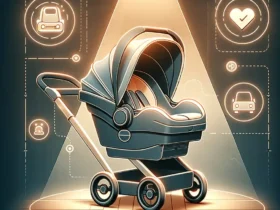
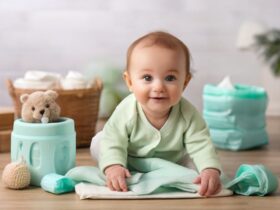








Leave a Review